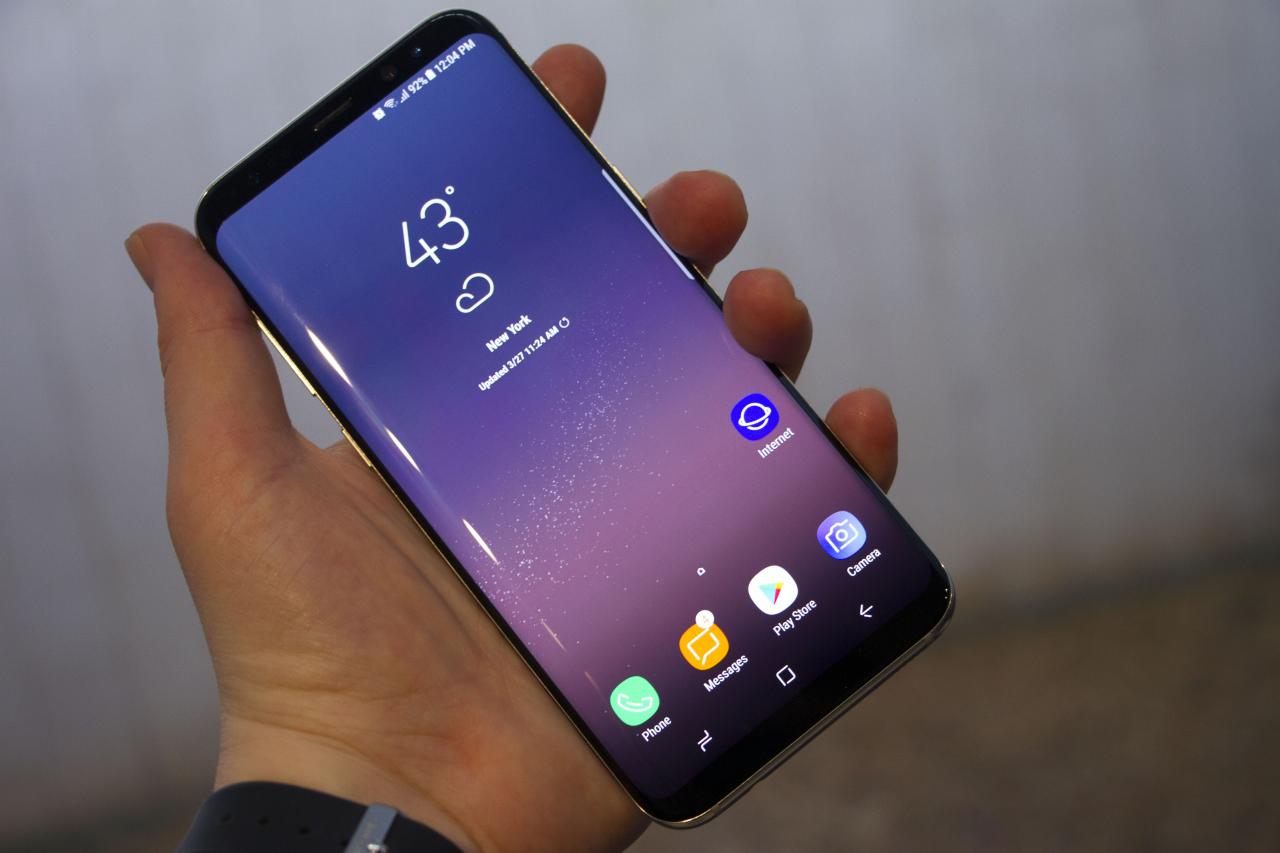galaxy note 7 sets the stage for this enthralling narrative, offering readers a glimpse into a story that is rich in detail and brimming with originality from the outset. Launched amid high expectations, the Galaxy Note 7 was heralded as a significant advancement in smartphone technology, boasting impressive hardware and innovative features. However, its journey took an unexpected turn due to safety concerns that led to a global recall, reshaping the landscape of mobile devices and consumer trust in technology.
Historical Context of the Galaxy Note 7

The Samsung Galaxy Note 7 was introduced to the world on August 2, 2016, marking a significant moment in smartphone history. Positioned as a premium device in Samsung’s Galaxy Note series, it showcased technological advancements and set high expectations for performance, design, and features. However, the initial excitement was soon overshadowed by a series of unprecedented challenges that altered its legacy.
The manufacturing process of the Galaxy Note 7 involved cutting-edge technologies and meticulous attention to detail. Samsung utilized a combination of materials, including Gorilla Glass 5 for added durability, and aluminum for a sleek, modern design. The device was equipped with a 5.7-inch Super AMOLED display, which provided vibrant colors and deep contrasts. Additionally, the Note 7 was one of the first smartphones to adopt the USB-C charging standard, enhancing charging speeds and convenience. Despite these innovations, the manufacturing process faced scrutiny due to reports of defective batteries that led to overheating and fires, prompting a massive recall.
Significance of the Galaxy Note 7 in Smartphone Evolution
The Galaxy Note 7 played a pivotal role in the evolution of smartphones, influencing design and functionality across the industry. It introduced features that became benchmarks for future devices. Key aspects of its significance include:
- Design Innovation: The curved display and sleek design of the Note 7 set a new standard for aesthetics in smartphones, pushing other manufacturers to adopt similar designs in their flagship models.
- Stylus Integration: The S Pen was enhanced with new features, such as screen-off memo and improved pressure sensitivity, reinforcing the importance of stylus functionality in mobile devices.
- Water Resistance: With an IP68 rating, the Note 7 emphasized the need for devices to be resistant to water and dust, influencing the design of subsequent smartphones.
- Focus on Security: The introduction of iris scanning technology highlighted the growing emphasis on security features in smartphones, prompting competitors to explore similar biometric solutions.
The legacy of the Galaxy Note 7 is a reminder of the delicate balance between innovation and safety, as its story reflects the complexities of modern technology. Its impact on design, functionality, and safety standards continues to resonate within the smartphone industry today.
Technical Specifications and Features
The Galaxy Note 7, launched by Samsung in 2016, showcased a remarkable blend of innovation and high-end technology. The device was designed to cater to the needs of power users who demand both performance and functionality. This smartphone became notable not only for its impressive specifications but also for the unique features that set it apart from others in the market.
The hardware specifications of the Galaxy Note 7 were top-of-the-line for its time, featuring a robust architecture that appealed to tech enthusiasts. It was powered by either the Qualcomm Snapdragon 820 or Samsung’s own Exynos 8890 processor, depending on the region. The device came equipped with 4GB of RAM and offered 64GB of internal storage, which was expandable up to 256GB via a microSD card.
Hardware Specifications, Galaxy note 7
The Galaxy Note 7’s hardware specifications contributed significantly to its appeal. Here are the key technical aspects that defined this device:
- Display: A stunning 5.7-inch Super AMOLED display with a resolution of 1440 x 2560 pixels, offering vibrant colors and deep blacks.
- Processor: Powered by the Qualcomm Snapdragon 820 or Exynos 8890, ensuring speedy performance and efficient multitasking.
- RAM: 4GB of RAM, providing seamless handling of applications and tasks.
- Storage: 64GB internal storage, expandable via microSD card up to 256GB, catering to users needing additional space.
- Camera: A 12 MP rear camera with dual pixel technology for fast autofocus, and a 5 MP front camera, perfect for selfies and video calls.
- Battery: A 3500 mAh battery with fast charging capabilities, along with wireless charging support.
- Operating System: Initially shipped with Android 6.0 (Marshmallow), upgradable to later versions.
- Water and Dust Resistance: IP68 rating, ensuring durability against dust and water exposure.
Unique Features
The Galaxy Note 7 distinguished itself from its competitors with several unique features, primarily its S Pen functionality. The S Pen was not only a stylus but also a tool that enhanced productivity and creativity. Here are some of the standout features:
- Air Command: This feature allowed users to access various S Pen functions quickly, such as screen write, smart select, and live message.
- Screen Off Memo: Users could take notes on the screen without unlocking the phone, making it easy to jot down ideas on the fly.
- Translate and Convert: The S Pen could translate text and convert currency or measurements simply by hovering over the content.
- Water-Resistant Stylus: The S Pen was designed to be water-resistant, complementing the overall design of the device.
- Improved Pressure Sensitivity: The S Pen featured 4096 levels of pressure sensitivity, offering precise control for artists and note-takers alike.
Comparison with Predecessors and Competitors
When compared to its predecessors, such as the Galaxy Note 5, the Note 7 offered significant enhancements. The introduction of a larger display, improved camera performance, and the refined S Pen features elevated the device’s status in the smartphone market.
In contrast to its competitors, like Apple’s iPhone 7 Plus and Google’s Pixel, the Galaxy Note 7 maintained a unique selling point with its integrated stylus and productivity features.
- Galaxy Note 5 vs. Galaxy Note 7: While the Note 5 had a similar design, the Note 7 introduced improved waterproofing, an iris scanner, and a more refined S Pen.
- Galaxy Note 7 vs. iPhone 7 Plus: Despite the iPhone’s strong performance and ecosystem, the Note 7’s S Pen and multitasking capabilities provided an edge for productivity-focused users.
- Galaxy Note 7 vs. Google Pixel: The Pixel was praised for its camera quality, but it lacked the versatility and advanced stylus functionality of the Note 7.
The Galaxy Note 7 was a product that encapsulated Samsung’s ambition to lead the premium smartphone market, offering specifications and features that catered to a wide array of users, from professionals to casual consumers.
Safety Issues and Recall

The Galaxy Note 7, released in August 2016, quickly became embroiled in controversy due to its safety issues, which ultimately led to a major recall. The device was celebrated for its features and design but marred by reports of fires and explosions that raised serious concerns about its battery safety.
Samsung faced a significant crisis when numerous incidents of Note 7 devices catching fire or exploding were reported. These events were primarily attributed to the lithium-ion batteries used in the phone. The battery cells were found to have manufacturing defects that could cause short-circuiting, leading to overheating and, in some cases, combustion. This prompted an urgent response from Samsung, as the safety of consumers was at risk.
Recall Process
The recall process initiated by Samsung was one of the largest and most publicized in consumer electronics history. Samsung’s strategy included:
- Initial Recall Announcement: In September 2016, Samsung announced the first voluntary recall of 2.5 million devices.
- Exchange Program: Customers were offered the option to exchange their Note 7 for a new device or receive a full refund.
- Second Recall: After reports of fires even in replacement devices, a second, more comprehensive recall was announced in October 2016, leading to the complete cessation of production.
- Collaboration with Regulatory Bodies: Samsung worked closely with the U.S. Consumer Product Safety Commission (CPSC) to ensure a safe and effective recall process.
The efficiency of the recall process was critical in managing the safety crisis. Samsung provided detailed instructions and support for consumers to return their devices safely while offering incentives for exchanges.
Impact on Consumer Trust and Reputation
The ramifications of the Galaxy Note 7 recall were profound, affecting Samsung’s reputation and consumer trust. The company, once regarded as a leader in innovation, faced several challenges, including:
- Loss of Consumer Confidence: The incidents eroded trust among consumers who were previously loyal to the brand, leading to skepticism regarding the safety of future products.
- Financial Consequences: The recall and production halt resulted in an estimated loss of over $5 billion for Samsung in direct costs, alongside long-term impacts on sales of other devices.
- Market Position: Competitors seized the chance to market their devices as safer alternatives, further impacting Samsung’s position in the smartphone market.
- Corporate Reputation: The crisis prompted a reevaluation of safety standards and quality control measures within Samsung, impacting its corporate image.
In summary, the Galaxy Note 7 recall serves as a pivotal case study in the importance of product safety and the profound effects that safety issues can have on a brand’s reputation and consumer trust. The lessons learned from this incident continue to influence the industry today.
Legacy and Impact on Future Devices

The Galaxy Note 7, despite its brief market presence, left a profound mark on the smartphone industry. Its tumultuous journey from launch to recall underlined the critical importance of safety standards and design considerations in smartphone manufacturing. The repercussions of this incident were felt across various facets of device engineering and consumer trust in technology.
The fallout from the Galaxy Note 7 incident spurred manufacturers to prioritize safety and quality control in their designs. A notable shift occurred in how companies approached battery technology, focusing more on rigorous testing and development processes. This change was crucial in rebuilding consumer confidence and ensuring that future devices would not encounter similar catastrophic failures.
Influence on Design and Safety Protocols
The Galaxy Note 7 debacle prompted a reevaluation of safety protocols within the smartphone industry. Manufacturers implemented more stringent measures to mitigate risks associated with battery malfunctions. The following points highlight the significant changes that emerged:
- Enhanced Battery Testing: Companies adopted comprehensive testing procedures, including thermal runaway tests and stress tests, to better understand battery performance under various conditions.
- Improved Manufacturing Standards: The incident led to a push for higher manufacturing standards, ensuring that components adhered to stricter safety guidelines.
- Increased Transparency: Brands began providing clearer communication regarding safety features and risks, actively engaging with consumers to restore trust.
Evolution of the Galaxy Note Series
Following the Note 7 incident, Samsung undertook significant measures to revive and enhance the Galaxy Note series. The subsequent models reflected a commitment to safety and innovation, incorporating valuable lessons learned from the previous challenges. The evolution is characterized by:
- Galaxy Note 8: Launched with a focus on safety, it featured a redesigned battery and rigorous testing protocols, positioning it as a safer alternative.
- Focus on User Experience: Subsequent models emphasized features like the S Pen capabilities and enhanced display technology to differentiate them from competitors and regain consumer loyalty.
- Integration of Advanced Safety Features: Newer models incorporated features like battery management systems and anti-overheating technologies to prevent future incidents.
Long-term Effects on the Smartphone Industry
The Galaxy Note 7 incident has had lasting repercussions on the broader smartphone industry, extending beyond just Samsung. It instigated a series of changes that shaped the landscape of mobile technology. Key long-term effects include:
- Industry-wide Safety Initiatives: Manufacturers across the board began collaborating to establish industry-wide safety standards, fostering a culture of shared responsibility in ensuring device safety.
- Shift in Consumer Expectations: Consumers became more vigilant regarding device safety, prompting brands to prioritize transparency and quality in their product offerings.
- Innovation in Battery Technology: The quest for safer, more efficient batteries led to increased investment in new technologies, such as solid-state batteries, which promise greater safety and performance.
“The Galaxy Note 7 incident served as a wake-up call for the entire smartphone industry, underscoring the paramount importance of safety in technology.”
FAQ Compilation: Galaxy Note 7
What were the main features of the Galaxy Note 7?
The Galaxy Note 7 featured a 5.7-inch Super AMOLED display, a powerful Snapdragon 820 processor, 4GB of RAM, and an improved S Pen with enhanced functionality.
How did the Galaxy Note 7 compare to its predecessors?
Compared to its predecessors, the Galaxy Note 7 offered a more refined design, better camera capabilities, and was the first in the series to feature water resistance.
What caused the Galaxy Note 7’s battery issues?
The battery issues were attributed to manufacturing defects that caused short-circuiting and overheating, leading to fires and explosions.
How did Samsung handle the recall process?
Samsung initiated a global recall, offering refunds and replacements, and implemented stricter quality control measures to regain consumer trust.
What impact did the Galaxy Note 7 have on future smartphone designs?
The Galaxy Note 7 incident prompted manufacturers to prioritize safety features and battery testing in subsequent smartphone designs, influencing industry standards.
The Samsung Galaxy S10 Plus stands out with its impressive AMOLED display and powerful camera capabilities, making it a favorite among tech enthusiasts. Its sleek design, coupled with robust performance, ensures that users enjoy a seamless experience whether for work or entertainment. This flagship model showcases Samsung’s commitment to innovation and quality in mobile technology.
Despite its initial hype, the Samsung Note 7 faced significant controversies due to safety issues. However, it was also a turning point for Samsung in terms of learning and adapting to consumer needs. The lessons learned from the Note 7 incident have since influenced the design and safety standards of subsequent models in the Galaxy lineup, showcasing the brand’s resilience and dedication to improvement.
